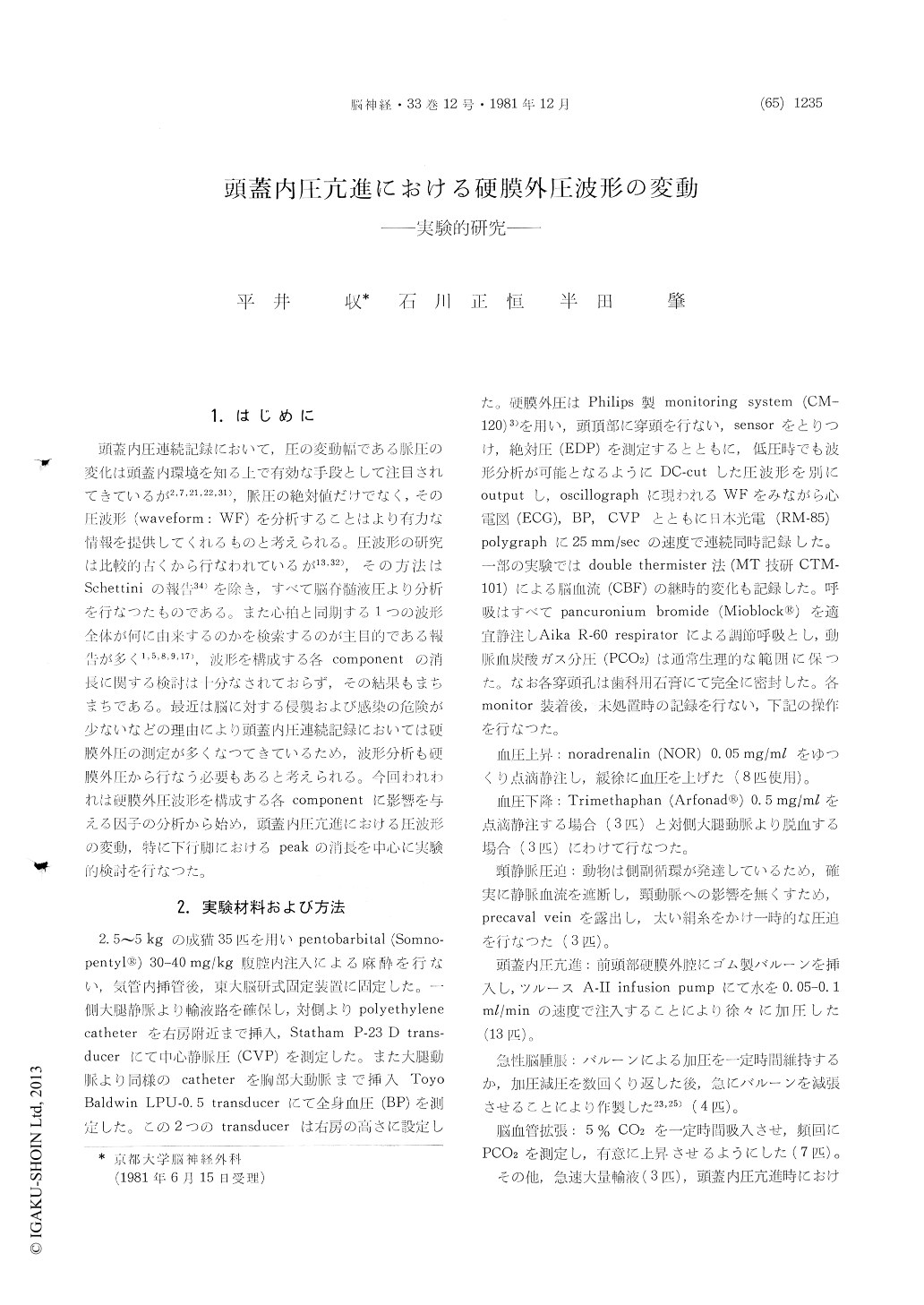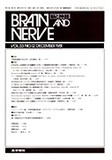Japanese
English
- 有料閲覧
- Abstract 文献概要
- 1ページ目 Look Inside
I.はじめに
頭蓋内圧連続記録において,圧の変動幅である脈圧の変化は頭蓋内環境を知る上で有効な手段として注目されてきているが2,7,21,22,31),脈圧の絶対値だけでなく,その圧波形(waveform:WF)を分析することはより有力な情報を提供してくれるものと考えられる。圧波形の研究は比較的古くから行なわれているが13,32),その方法はSchettiniの報告34)を除き,すべて脳脊髄液圧より分析を行なつたものである。また心拍と同期する1つの波形全体が何に由来するのかを検索するのが主目的である報告が多く1,5,8,9,17),波形を構成する各componentの消長に関する検討は十分なされておらず,その結果もまちまちである。最近は脳に対する侵襲および感染の危険が少ないなどの理由により頭蓋内圧連続記録においては硬膜外圧の測定が多くなつてきているため,波形分析も硬膜外圧から行なう必要もあると考えられる。今回われわれは硬膜外圧波形を構成する各componentに影響を与える因子の分析から始め,頭蓋内圧亢進における圧波形の変動,特に下行脚におけるpeakの消長を中心に実験的検討を行なつた。
Experimental analysis of epidural pulse wave-form, which is another index of intracranial pressure dynamics, was done with simultaneous recordings of arterial blood pressure, central venom pressure, electrocardiogram, epidural pressure and sometimes cerebral blood flow in anesthetized arti-ficially ventilated cats.
According to normal pattern of waveform, three component peaks were identified, namely P1, P2 and P3. P1 and P2 were synchronous with arterial pulse. increased in amplitude by elevation of arterial blood pressure, decreased by its lowering, while P3 was synchronous with atrial "a" wave on central venous pressure, augumented by increase of central venous pressure, and disappeared by selective com-pression of jugular vein. These P1 and P2 were considered to be of arterial origin, and P3 was of venous origin respectively.
With increase of intracranial pressure by constant inflation of epidural balloon, P1 and P2 became fused and P3 disappeared at about 30mmHg. While in acute brain swelling and under inhalation of 5% CO2 associated with epidural balloon inflation, P3 disappeared at about 20mmHg, lower than that observed in epidural balloon inflation only, although increase of pulse amplitude was a constant finding with increased intracranial pressure. This discre-pancy was thought to be caused by difference of cerebral vascular tone.
Increased intracranial pressure caused a change of pulse waveform from polyphasic to monotonous in addition to increase of pulse height. Alteration of pulse waveform is considered to be closely related with increase of arterial driving force, cere-bral vascular tone, disturbance of the venous outflow, and then with pressure-volume relationship.
Present study suggests that analysis of the pulse waveform may provide a useful information about intracranial pressure dynamics without bolus or constant injection of fluid.

Copyright © 1981, Igaku-Shoin Ltd. All rights reserved.


